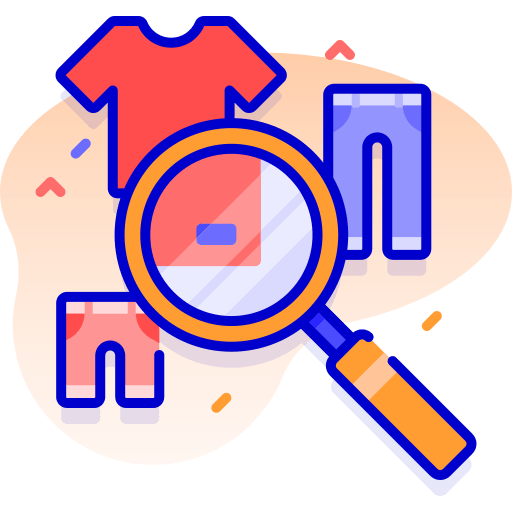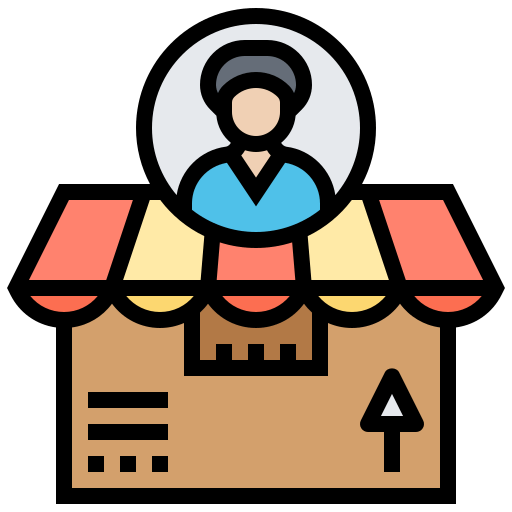1. Demand Confirmation
(1) Evaluation from Three Levels:
Before the sourcing work starts, it is necessary to clarify the purpose and demand of the sourcing procurement, so as to make the company and the sourcing procurement have consistent understanding and avoid wasting a lot of time on useless work in the later stage.
Taking the “Demand Confirmation Form” in our company’s sourcing standardization document as an example, demand confirmation is divided into three parts: existing product description, existing supplier description, and new sourcing supplier and product demand description.
Existing Product Description
Type of existing product: OEM or ODM
Description of key product performance: Describe the important parameter performance indicators required for the use of this product, and sort them in order of importance from large to small.
Existing Supplier Description
Describe the performance of the existing supplier from four aspects: cost, quality evaluation, delivery, and advantages and disadvantages of the existing supplier.
New Sourcing Requirements
Mainly include three parts: the reason for re-sourcing, the places that the product needs to meet, and the standards/requirements that the new supplier needs to meet.
(Next page is the “Demand Sourcing Form”)
(2) Notes:
We always hope that most of the requirements can be met, to find suppliers including but not limited to good communication, cost-effective… but the reality is often contrary to our wishes, and there are no perfect suppliers. Even if they exist, they need to be “educated” by customers through a long process. Just like a boy who understands the girl’s mind very well, he is very likely to have gone through many “planting” by predecessors before it is your turn to “enjoy the cool”. Therefore, in the sourcing demand, the most important requirements should be clarified and streamlined, and sorted according to the importance. Which requirements must be met and which can be abandoned, so that the demand has a focus and becomes relatively simple.

2、Sourcing Path: Where to find and how to find
First, categorize the products to be sourced and determine what category they belong to. For example, in our company, the main products we source are usually divided into three categories: lighting and related products, home gifts, and new/unfamiliar products.
(I) What to know before sourcing
As the saying goes, “sharpen the axe before chopping the firewood.” If we are sourcing for a new or unfamiliar product, it is important to do some research beforehand. So what do we need to know about a new or unfamiliar product?
This includes, but is not limited to, the following aspects: appearance, function, craftsmanship, product parameters, standards/certifications, application scenarios, and market/users. Where to look and how to look?
(1) 1688/Alibaba International – to understand functions/features/parameters/appearance
Taking a tube lamp as an example, searching for related keywords on 1688/Alibaba International will display many search results from various merchants, and looking at several of them will give you a rough idea of the parameters of a product.

(2) Google keyword search
Using different keywords to search on Google can also yield a lot of information. For example: product name + country, product name + channel, product name + specific function/feature.
Please note that before formally sourcing a supplier, it is important to be aware that the product being sourced can have many different descriptions. For example, vinyl wallpaper can also be described as PVC wallpaper, plastic wallpaper, vinyl wall decals, rolled wallpaper, etc. Don’t be limited to the product name given to you by the publisher, use different descriptions and keywords to search for more results, and avoid the situation of having few suppliers to choose from.
(II) Sourcing channels & methods
Find out if there are specialized/comprehensive exhibitions for the category of products you need to source, and then search for the participating suppliers. Taking lighting products as an example:
Channel 1: Professional exhibition/comprehensive exhibition, such as Guangzhou International Lighting Exhibition, Hong Kong International Lighting Fair, Frankfurt Lighting Exhibition, and Canton Fair.
Guangzhou International Lighting Exhibition Exhibitor List:

Hong Kong International Lighting Fair Exhibitor List:

Channel 2: Customs data. Our company often uses websites such as Maoxiaoqi and Global Trade Online. These two websites require payment to use, but here are some other options:
Panjiwa
52wmb, which provides free trial membership.
B2B3, which allows you to view three free supplier analysis reports per day.
Channel 3: Global Resources/Alibaba/Made in China/1688, etc.
The first three are common B2B platforms that provide intuitive information about a supplier’s product line and company status. The suppliers on 1688 mainly serve the domestic market or are wholesalers. When looking for suppliers on 1688, pay attention to whether they meet your needs. If it is for preliminary technical development or if the order volume is not large, you can refer to 1688 suppliers.
Channel 4: Industry associations, DingTalk “Enterprise Encyclopedia”, Qichacha, Baidu, Google and other search engines.
Channel 5: Industrial concentration areas (for example, if the main product category of the company is LED, they will often go to Zhongshan to source).
Note:
When using customs data to search for suppliers, HS CODEs are generally not used for searching, because each country uses different codes. So use product keywords as much as possible, or use different product descriptions to maximize search results.
If you have no idea how to search for a supplier, one way is to learn from the “giants”. Find out which famous companies exist in your industry and search for the suppliers they use. The supplier admission and screening system of big companies will only be stricter than ours. If top companies in the industry purchase from a particular supplier, it means that someone has already done the screening work for you.
3.The first development letter to a new supplier
(I) How to write a development letter
Through various sourcing channels mentioned earlier, perhaps you have found a supplier that looks good and want to further contact and understand them. Although few people read development letters these days, as an important step in developing suppliers, it is still necessary to write about how to write the first development letter to a new supplier.
Generally, pay attention to the following points:
- Try to write down the supplier’s salesperson’s name as much as possible
Many company websites leave email addresses starting with sales, info, etc., so whether the email will be opened and seen is really a matter of luck. At this time, I will pay attention to it. Sometimes, in addition to the landline, the contact phone number will be followed by a string of mobile phone numbers. Most of the numbers can be used to search for the salesperson’s name in WeChat. If I really can’t find the corresponding salesperson’s email, I will write down the salesperson’s name. This can also slightly increase the probability of your email being replied to, rather than being treated as spam.
- Write the email like a real person
Imagine, would you bluntly ask the supplier for a catalog/price list as soon as you start? Apart from really bored/novice inexperienced salespeople who will give you an outrageous price, the more likely it is that the supplier will not reply at all. Therefore, you need to write like a real customer, giving more specific needs/questions. Generally, I will do this:
①Before sending the email, I will carefully look at the supplier’s product list to see if it meets the sourcing requirements/interested models/key parameter indicators/certifications, etc., and then write in the email: interested in your company’s XX and XX models (specific to the model name).
②Ask questions. If you cannot find the parameters, certification or other information you need on the supplier’s webpage, you need to mention it in the email, such as what is the XX parameter of XX product/whether there is an XX certification, etc. Ask whatever is missing. If all the information is really complete (this situation is rare), sometimes you must learn to ask questions you already know the answer to, ask the supplier some important parameters, and what they can do, etc. Asking questions can reflect that I have really looked at the product carefully, rather than sending emails casually.
- Don’t say too much exaggerated words
Maybe the previous purchase volume is really considerable, but for a new supplier, saying how big your purchase volume is, others are hard to believe, and they will also feel that your email is a scam. Therefore, in the first email, avoid introducing your company in a long and verbose way.
The following is an example of my development email:
Hi Tony/Jacky/Amy…
Write down the salesperson’s name as much as possible. If you really can’t find it, polite titles such as Madam/Sir should also be written.
I’m XXX from XXX. We’re a purchase office of foreign lamp factory. Our main business is streetlight, gas station of government channels. Every year we’ll purchase 3-4w sets light housings and accessories and export to the North America and assemble locally.
Briefly introduce who I am, what we do, and what our business is like.
In the past, the LED drivers we bought in Taiwan, however product period and price had increased greatly in the start of 2022, thus we have to sourcing new suppliers.
Briefly explain the purpose of finding new suppliers.
Our requirement as below:
- 30-100w, 1250mA max, using in outdoor light/streetlight
- 0-10v dimming controller
- 5 years Warranty
- class 2
- UL certification
- PF>0.9 THD<10%
- Life time >50000h
- IP6X
We’ve checked your product list and found some model XXX/XXX/XXX might be fit our needs, if there is another models which meet above requirements, pls introduce with specification and E-catalogue.
List our product requirements to show that we have a certain understanding of the product and are not asking for prices casually. Then write that we are interested in the supplier’s XX and XX models, indicating that we have done our homework and read their webpage carefully. Then clearly state the information we need the supplier to provide.
(II) Precautions:
- The email should not be too long, concise and briefly explain the purpose and clarify the theme.
When an email is filled with long paragraphs of text, anyone will have the urge to close it at a glance. Large blocks of text are prone to reading fatigue, and also test attention. Use concise words to express your purpose.
- The font format should be unified and harmonious.
The email font and format reflect a person’s work habits and details, and for a supplier who is initially contacted, your email also represents.








